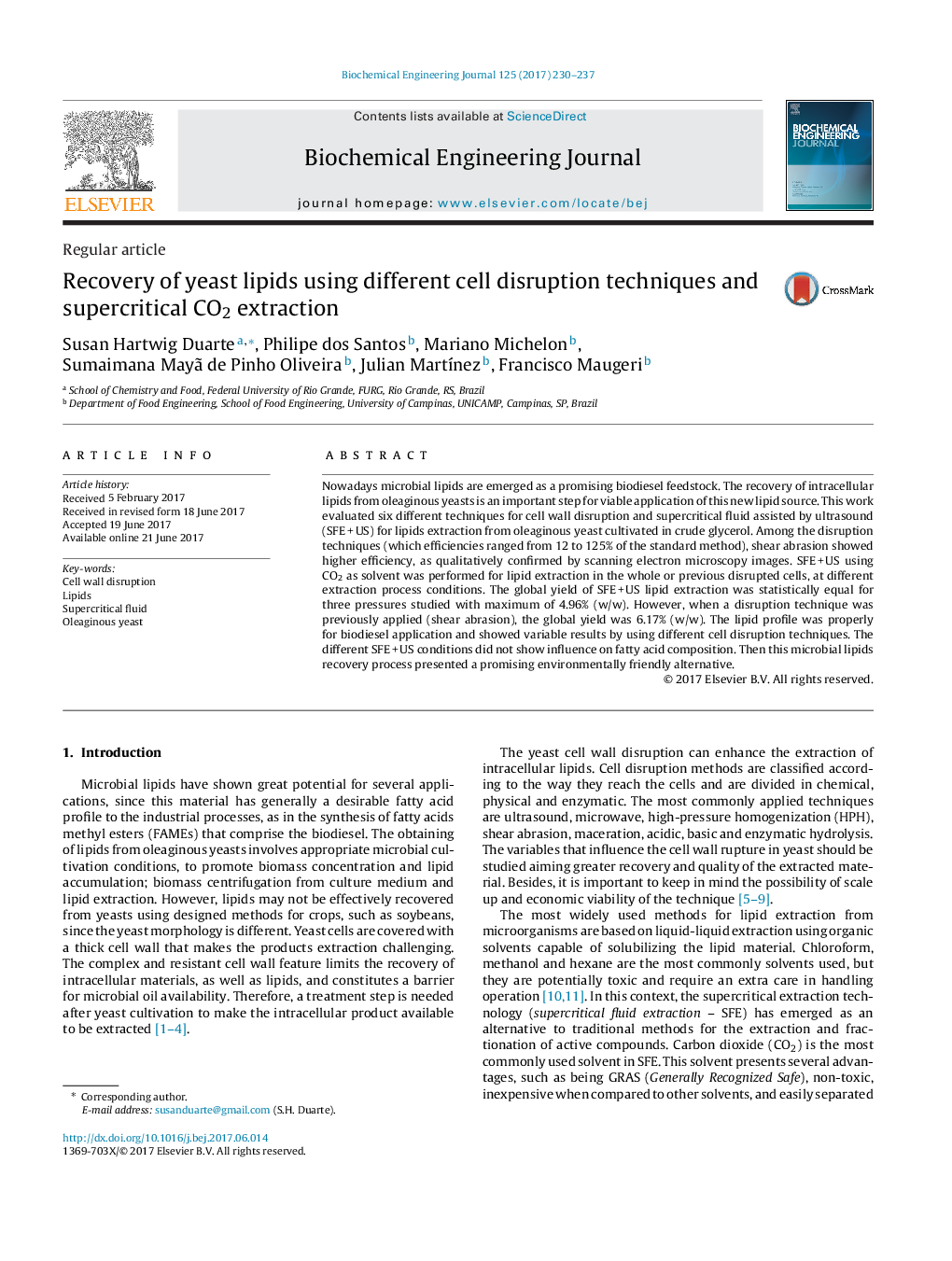| Article ID | Journal | Published Year | Pages | File Type |
|---|---|---|---|---|
| 4752142 | Biochemical Engineering Journal | 2017 | 8 Pages |
â¢We evaluated an alternative environmentally friendly microbial lipid extraction.â¢The yeast cell wall disruption with mechanical technique was an efficient process.â¢Supercritical fluid extraction conditions presented influence on yield of extraction.
Nowadays microbial lipids are emerged as a promising biodiesel feedstock. The recovery of intracellular lipids from oleaginous yeasts is an important step for viable application of this new lipid source. This work evaluated six different techniques for cell wall disruption and supercritical fluid assisted by ultrasound (SFEÂ +Â US) for lipids extraction from oleaginous yeast cultivated in crude glycerol. Among the disruption techniques (which efficiencies ranged from 12 to 125% of the standard method), shear abrasion showed higher efficiency, as qualitatively confirmed by scanning electron microscopy images. SFEÂ +Â US using CO2 as solvent was performed for lipid extraction in the whole or previous disrupted cells, at different extraction process conditions. The global yield of SFEÂ +Â US lipid extraction was statistically equal for three pressures studied with maximum of 4.96% (w/w). However, when a disruption technique was previously applied (shear abrasion), the global yield was 6.17% (w/w). The lipid profile was properly for biodiesel application and showed variable results by using different cell disruption techniques. The different SFEÂ +Â US conditions did not show influence on fatty acid composition. Then this microbial lipids recovery process presented a promising environmentally friendly alternative.
Graphical abstractDownload high-res image (115KB)Download full-size image
